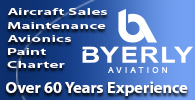PREFLIGHT YOUR AIRCRAFT INSURANCE POLICY
You wouldn’t fly your aircraft without a proper preflight inspection, right? The same logic should be applied to your aircraft insurance policy. Because your aviation policy is a reflection of your pilot qualifications, aircraft use, hull value and liability limits, it should be reviewed and updated any time there is a material change.
Here’s a list of the basic common-sense considerations when reviewing your aircraft insurance policy coverages:
- Hull Value: Owners often insure their aircraft for the original purchase price. Given that Twin Commanders no longer depreciate, it will be close to fair market value. If you have made improvements, like a Dash 10 conversion, paint and interior, or new avionics, the hull value should be increased to reflect it. Remember that these improvements will depreciate over time.
- Pilot qualifications: Oftentimes, lower-time pilots (in both total time or time in class or type) will not qualify for higher liability limits. As a pilot’s experience increases, the ability to purchase higher liability limits may be available. A pilot’s age and health can also affect insurability.
- Liability Limit: Liability limits offered vary depending upon the aircraft use (Part 91 or Part 135), pilot experience and any contractually required limits. Owner-flown limits may vary from $1 million to $10 million while professionally flown and or charter aircraft may carry limits as high as $250 million.
- Approved Use: Typically, aircraft can be used for Part 91 “pleasure & business,” including leases, or on-demand Part 135 charter. Make sure the approved use mirrors actual usage.
- Territory: Most policies include North America, including the Caribbean, Canada and Mexico. Wording varies from company to company so check the policy to make certain, or call us. If needed, coverage can be amended or purchased to include the Western Hemisphere or even worldwide coverage. Remember that Mexican liability coverage, written by a Mexican insurer, and EU coverage is required for landings or overflights in those areas. If you are planning a trip to Mexico or the EU, we can help to make certain you have the required coverage.
- Certificates of Insurance: Frequently, owners are asked to provide third parties such as community hangar owners, FBOs, maintenance facilities, and others status as additional insured, but do not delete the certificate once the requirement has expired. These certificates can have the effect of potentially diluting your coverage, so please let us know if they are no longer needed.
Your aircraft insurance policy is a living document that should be updated as needed. We are here to help you secure the coverage that meets your needs and gives you the best value. If you have questions about your policy, provisions or updates please contact me, Dale Barnard, Twin Commander Program Manager, at Gallagher Aviation; telephone 360-635-8008; email [email protected].
And, be sure to see us—Gallagher Aviation—at NBAA in Las Vegas November 17-19 at booth N1713.
Dale Barnard is the Twin Commander Insurance Program Manager for Gallagher Aviation.


 Photo by Tyson Rininger
Photo by Tyson Rininger 
